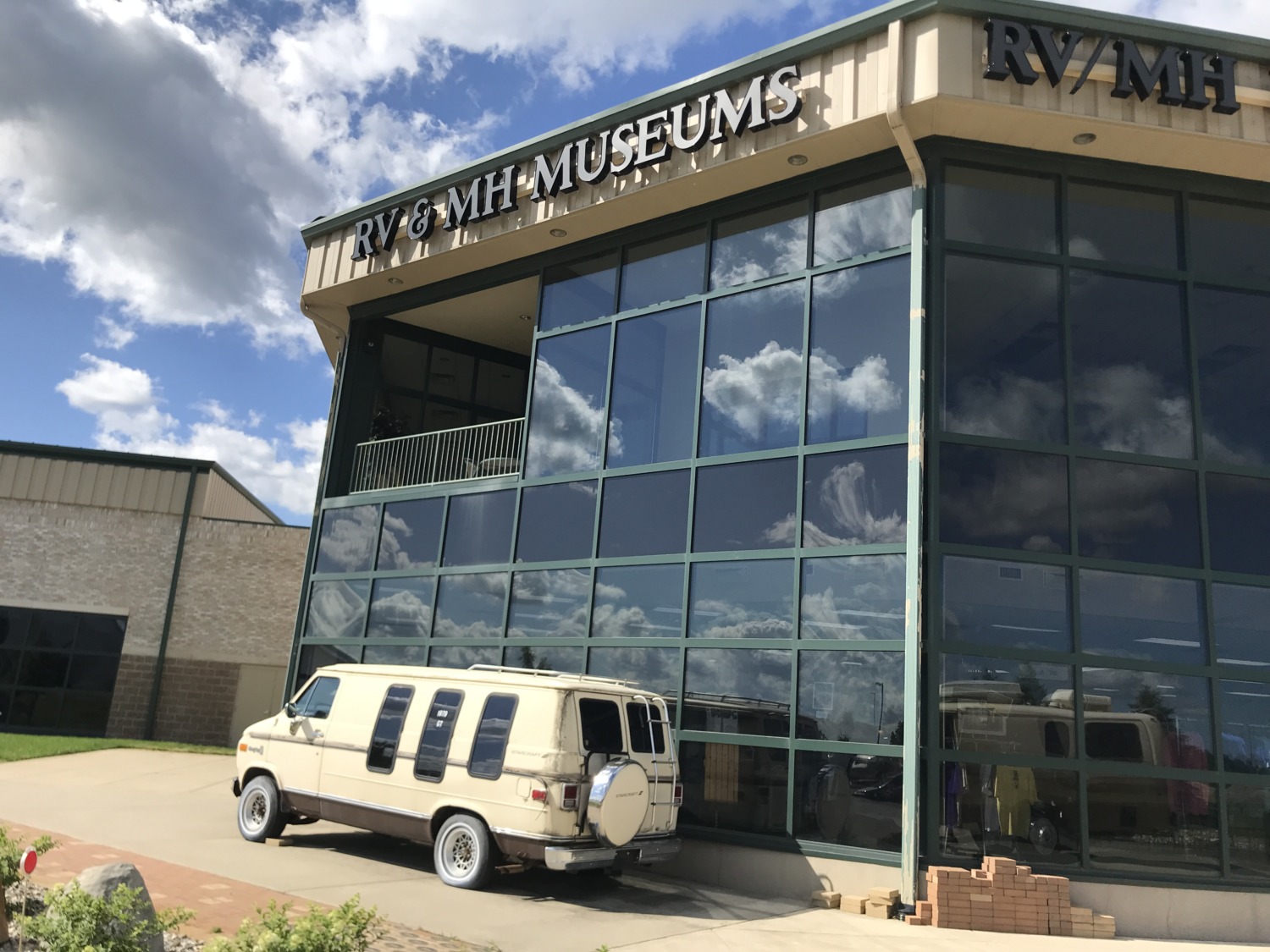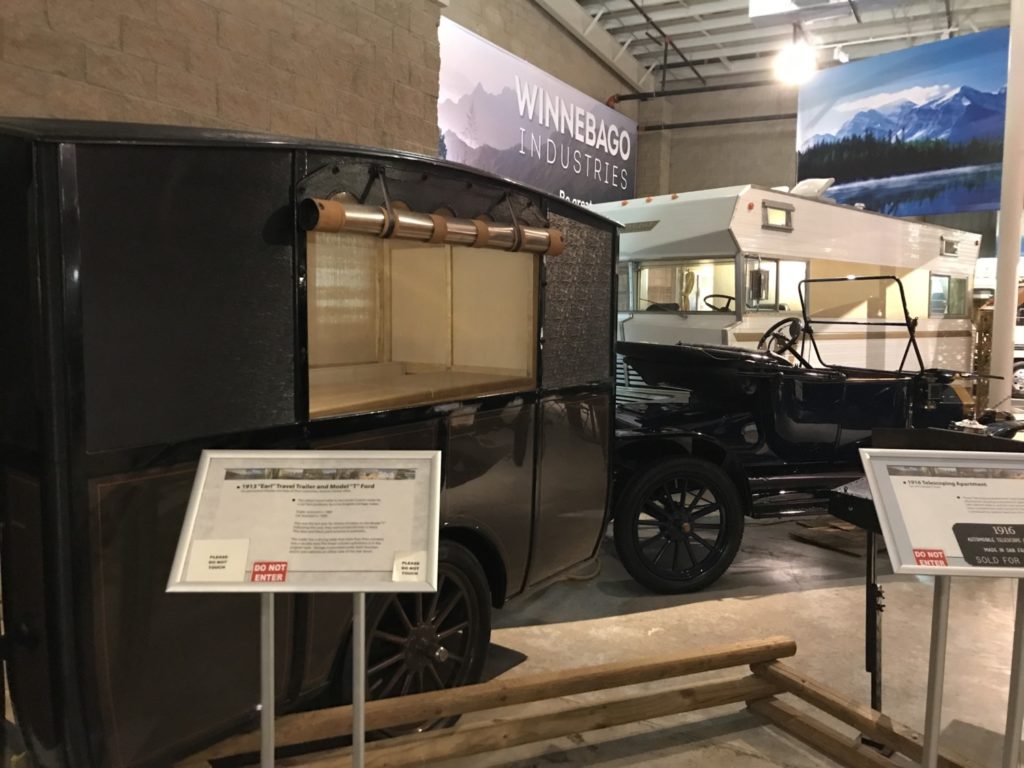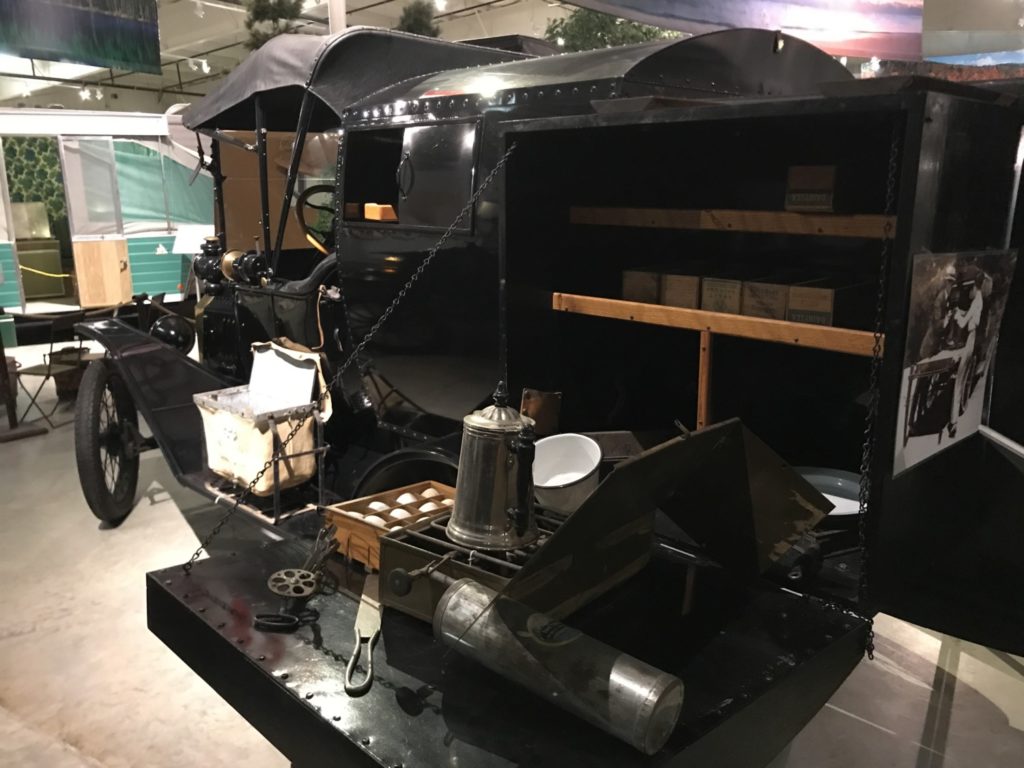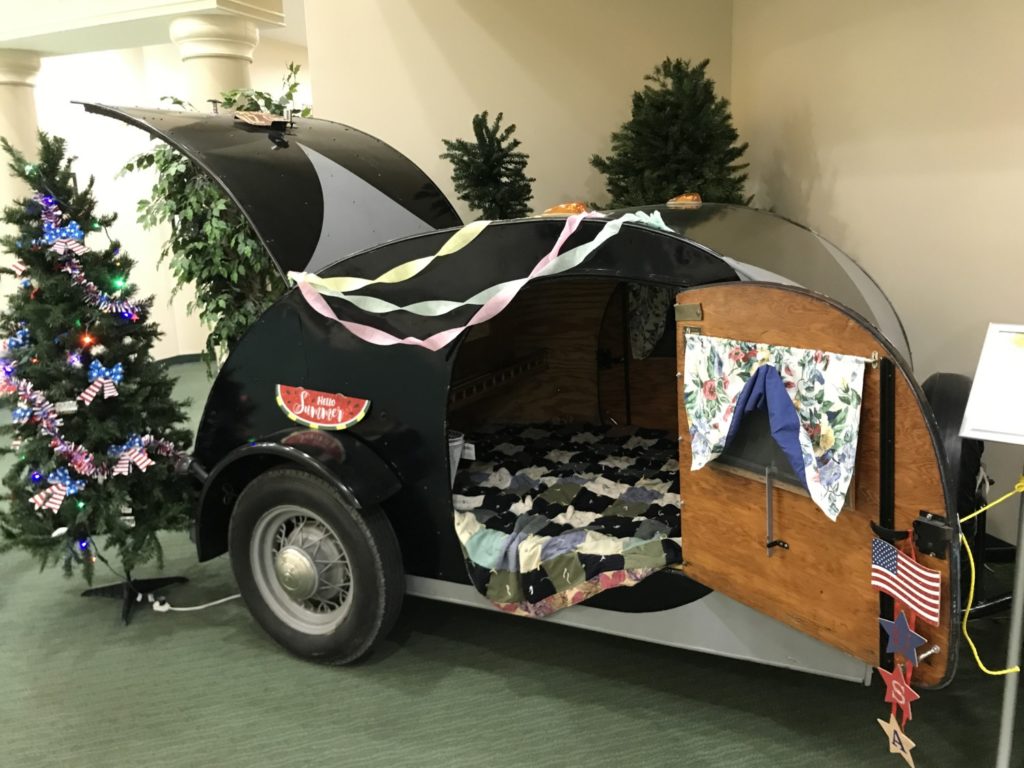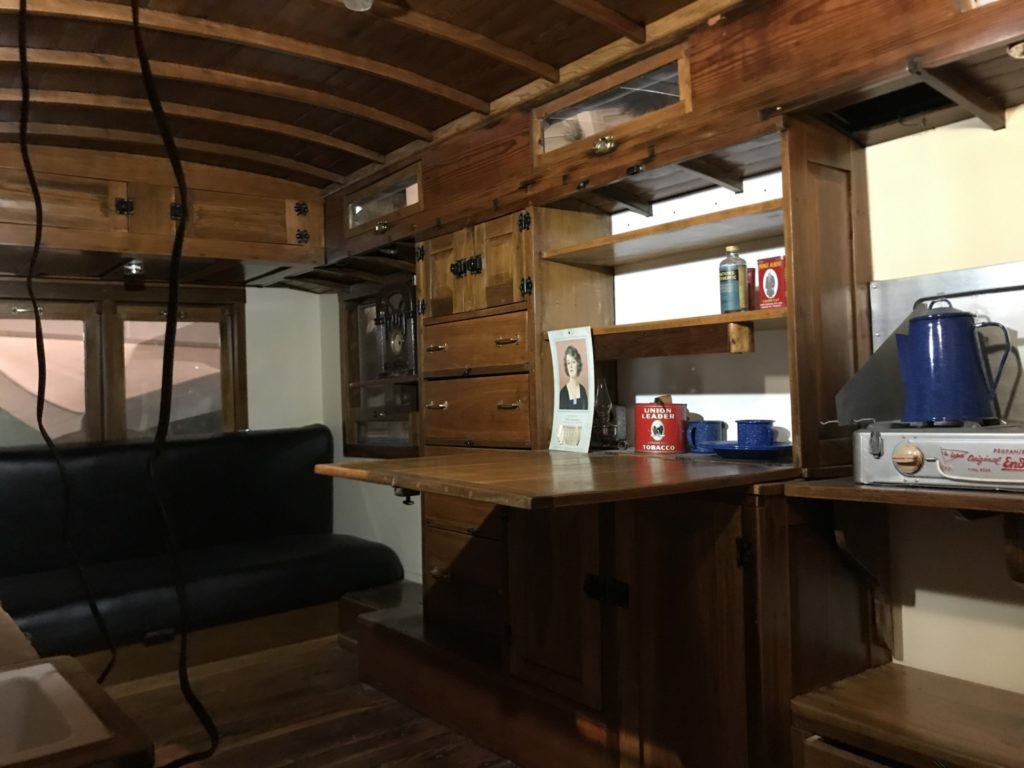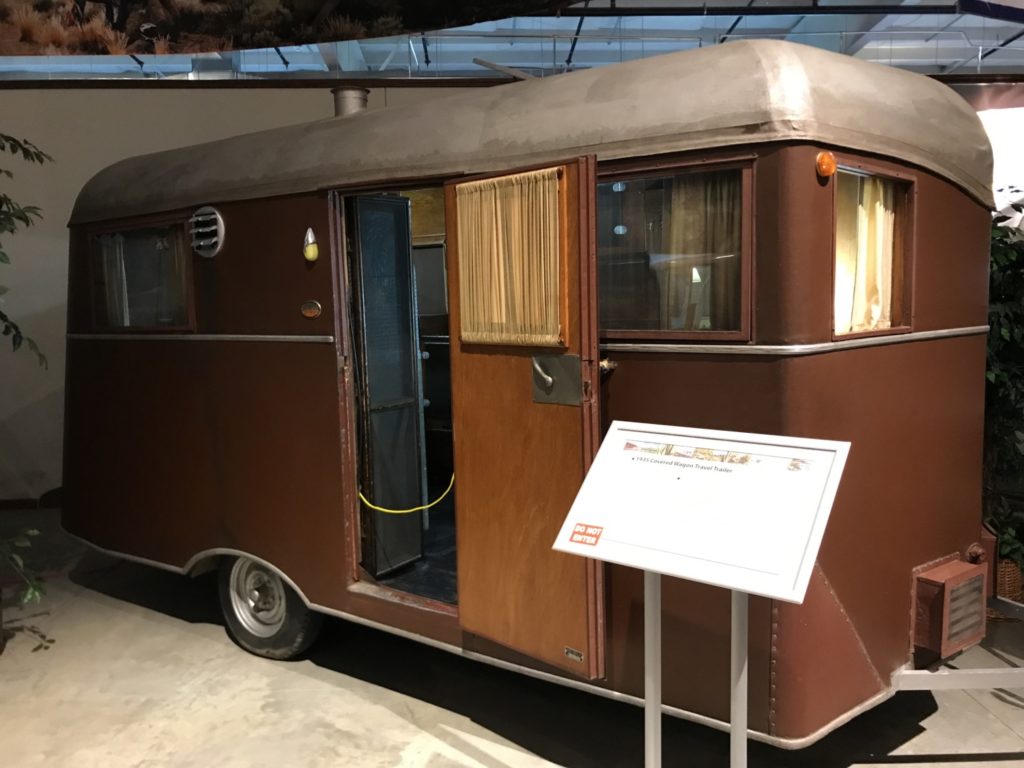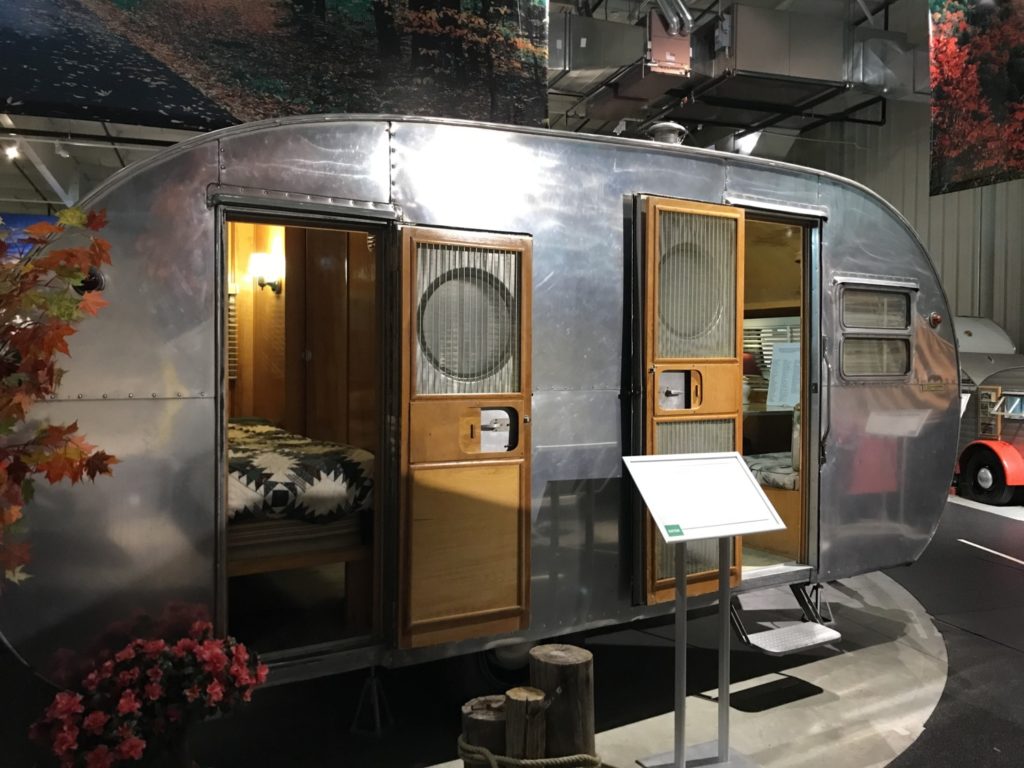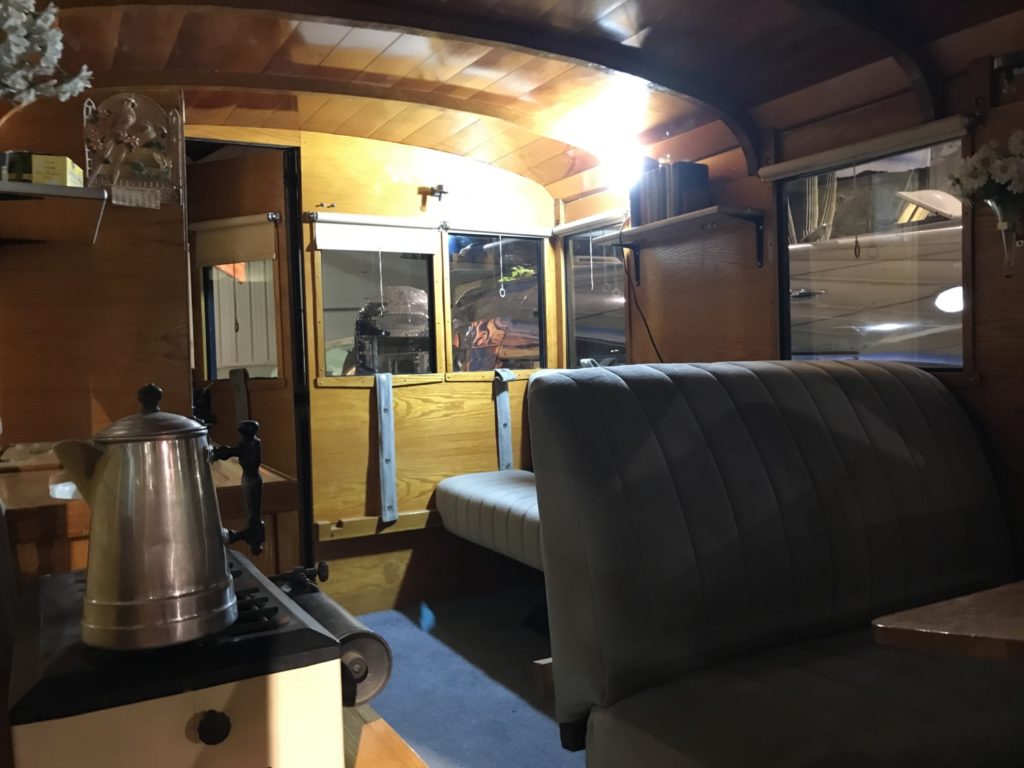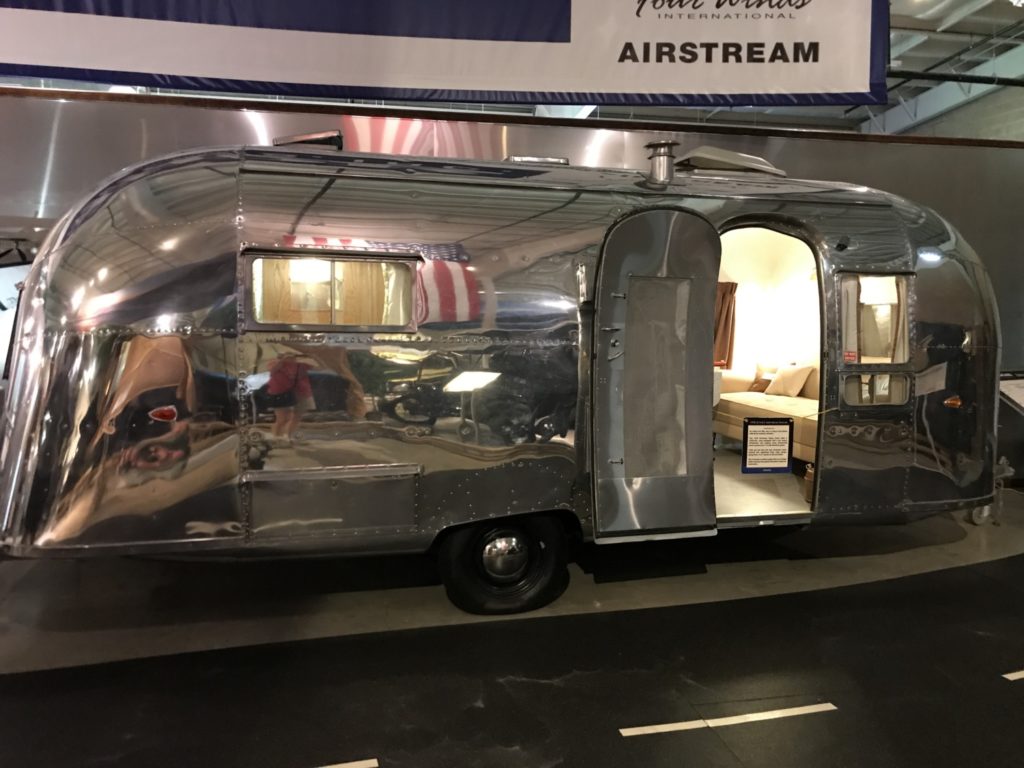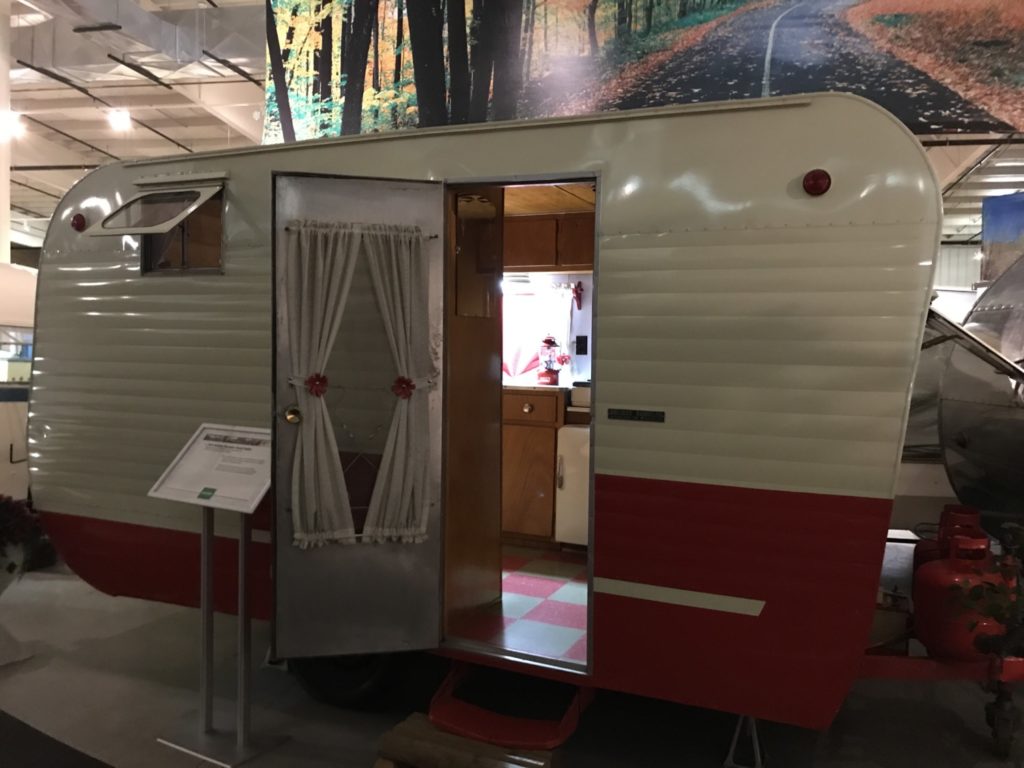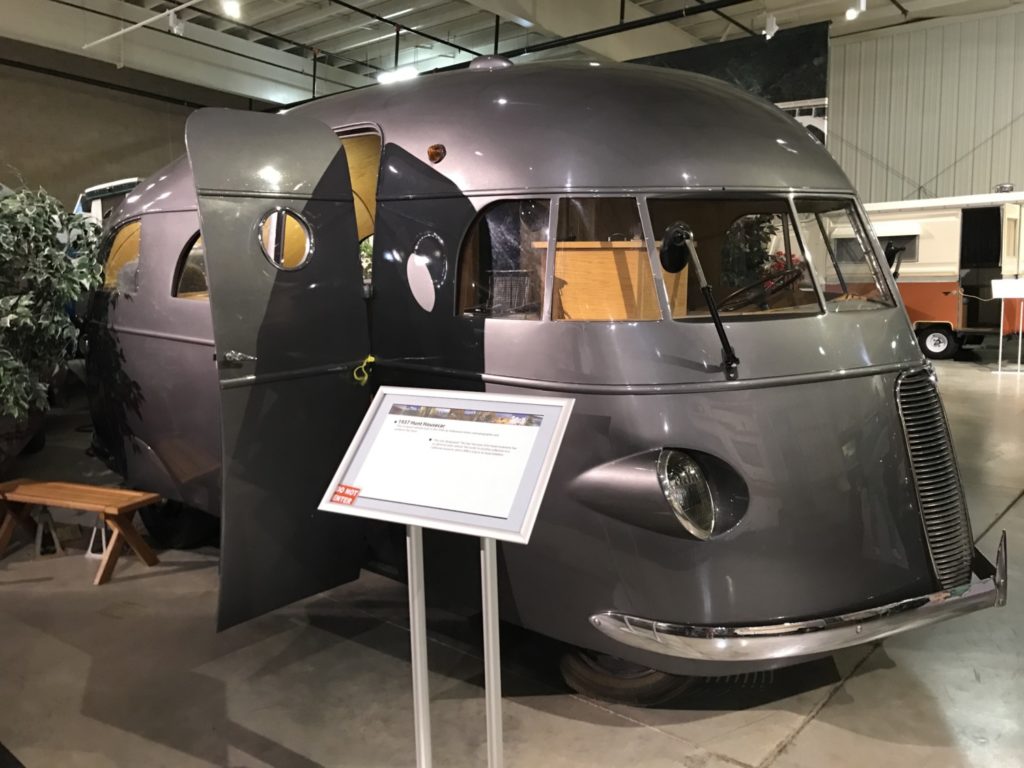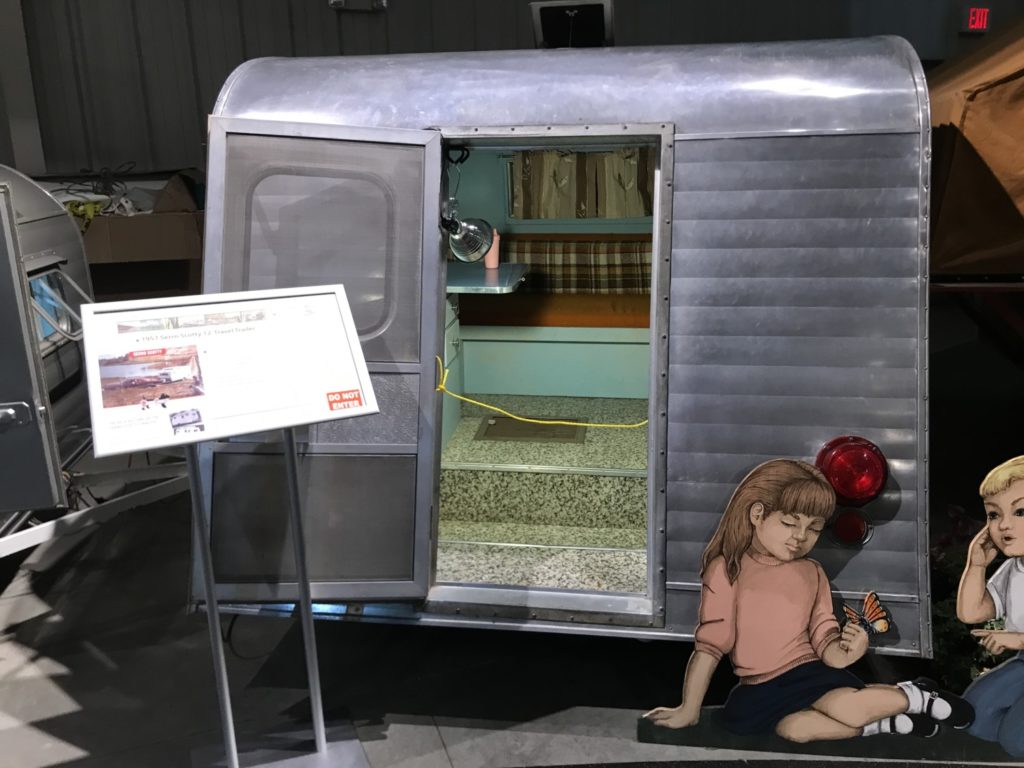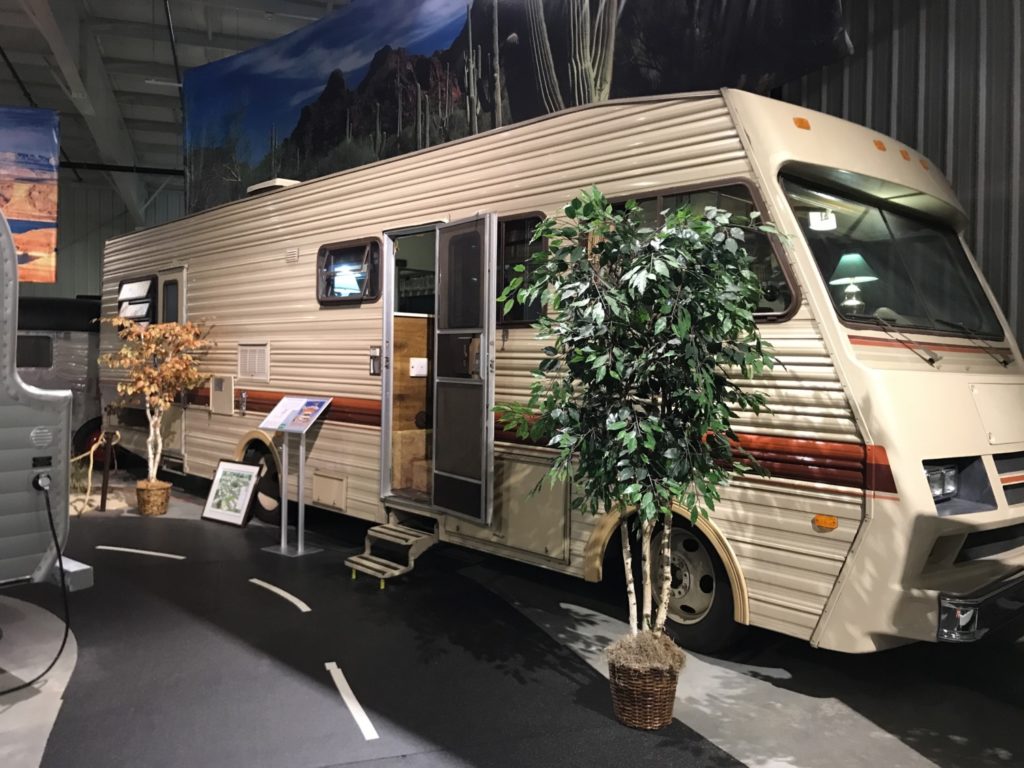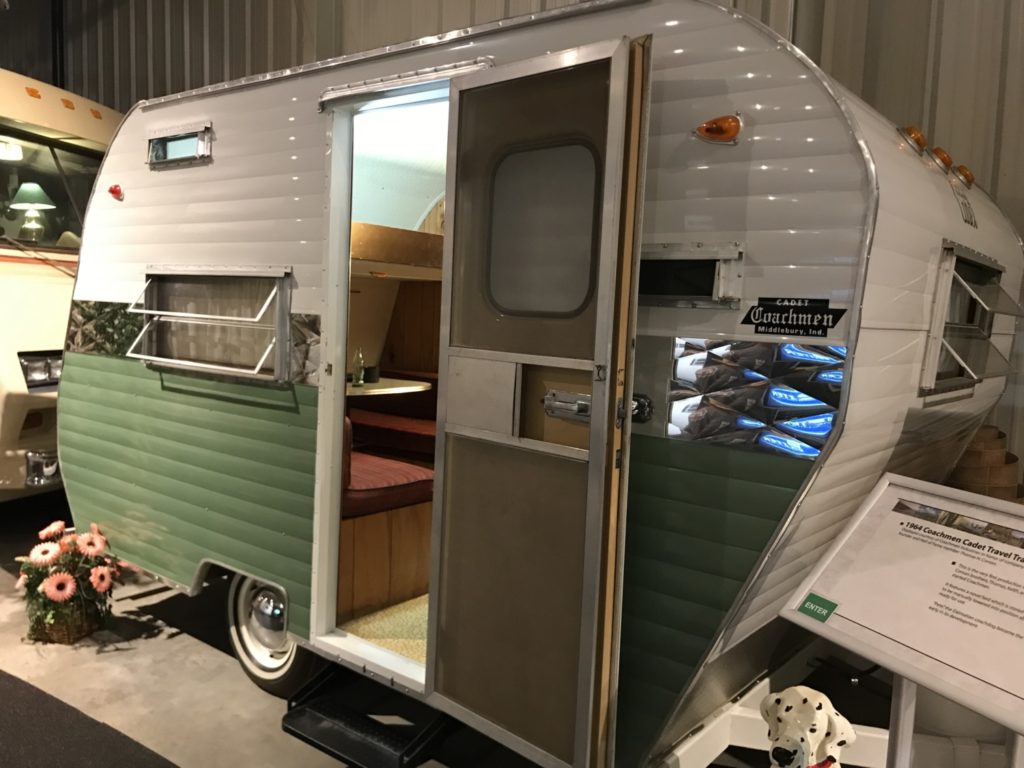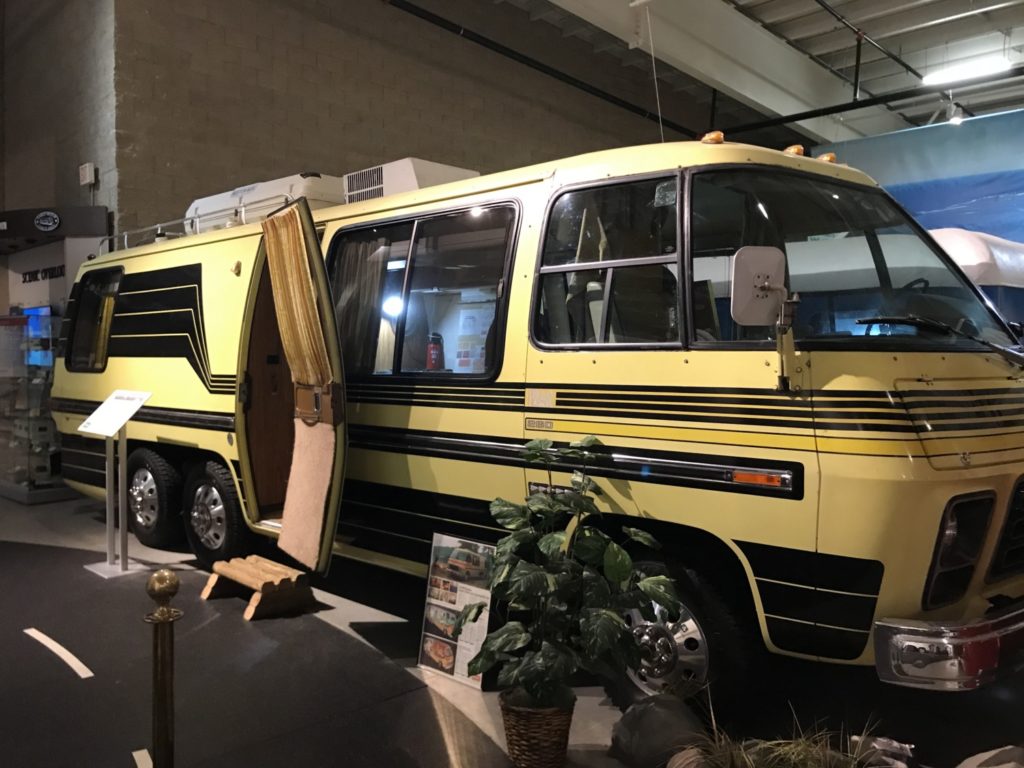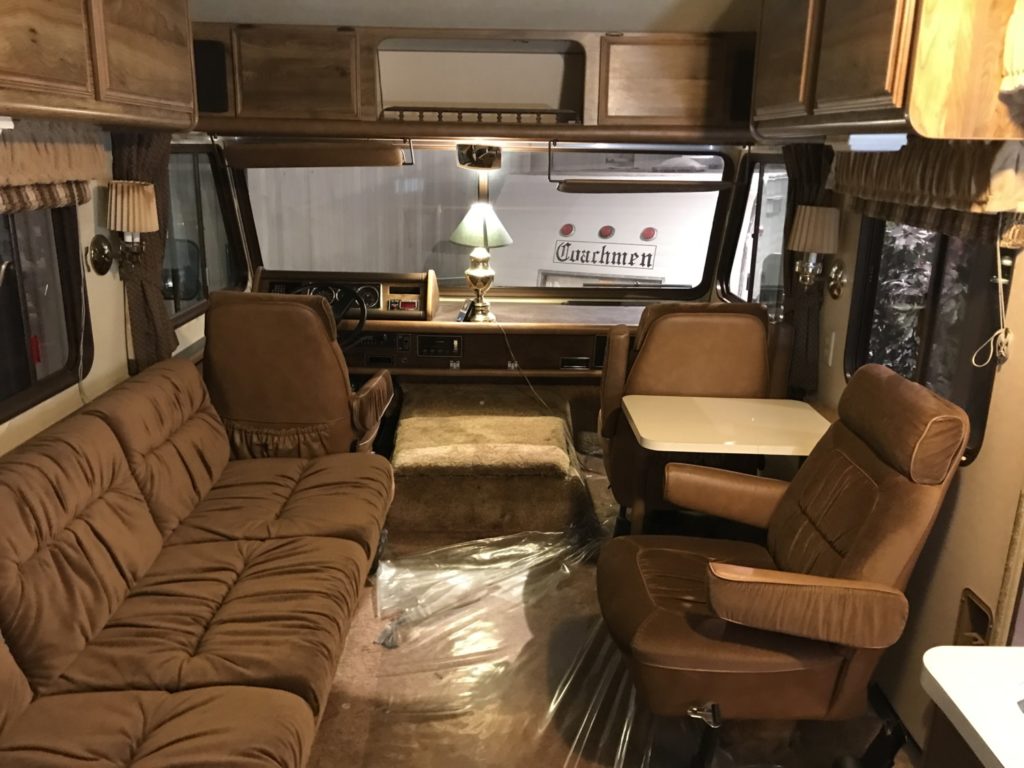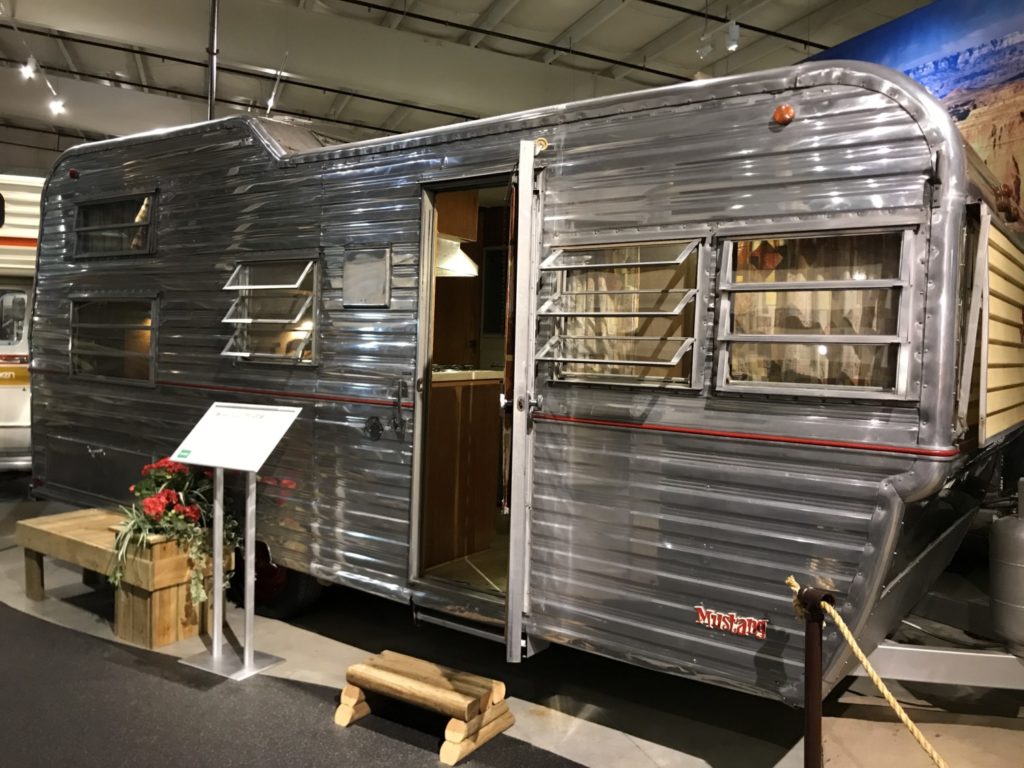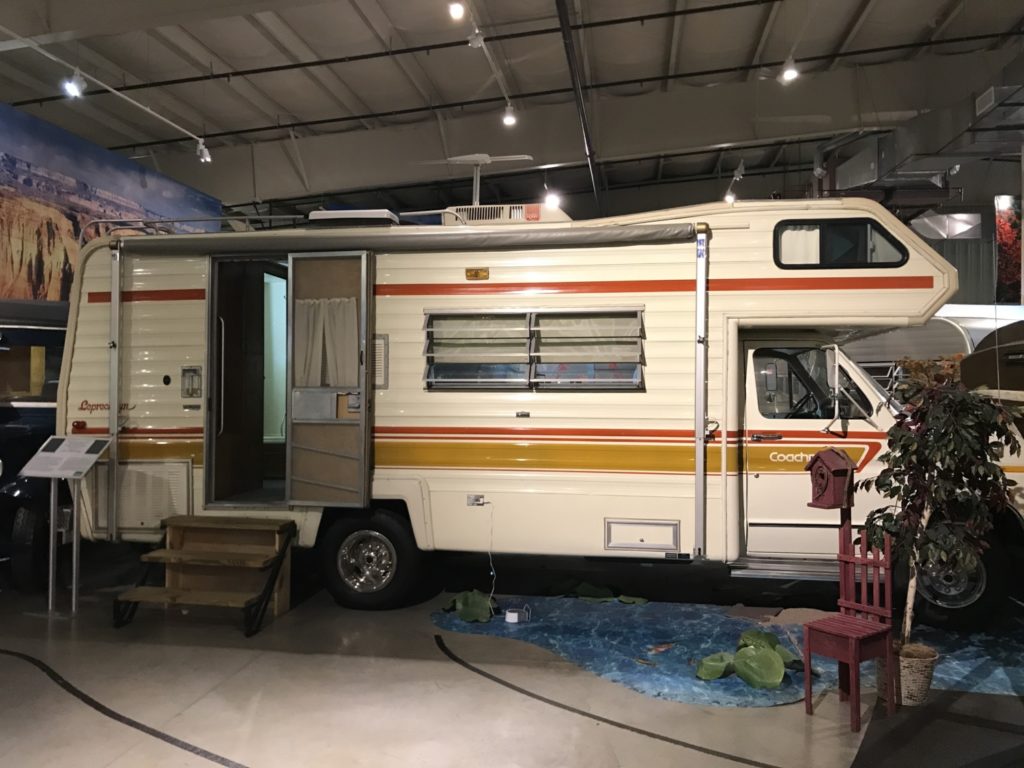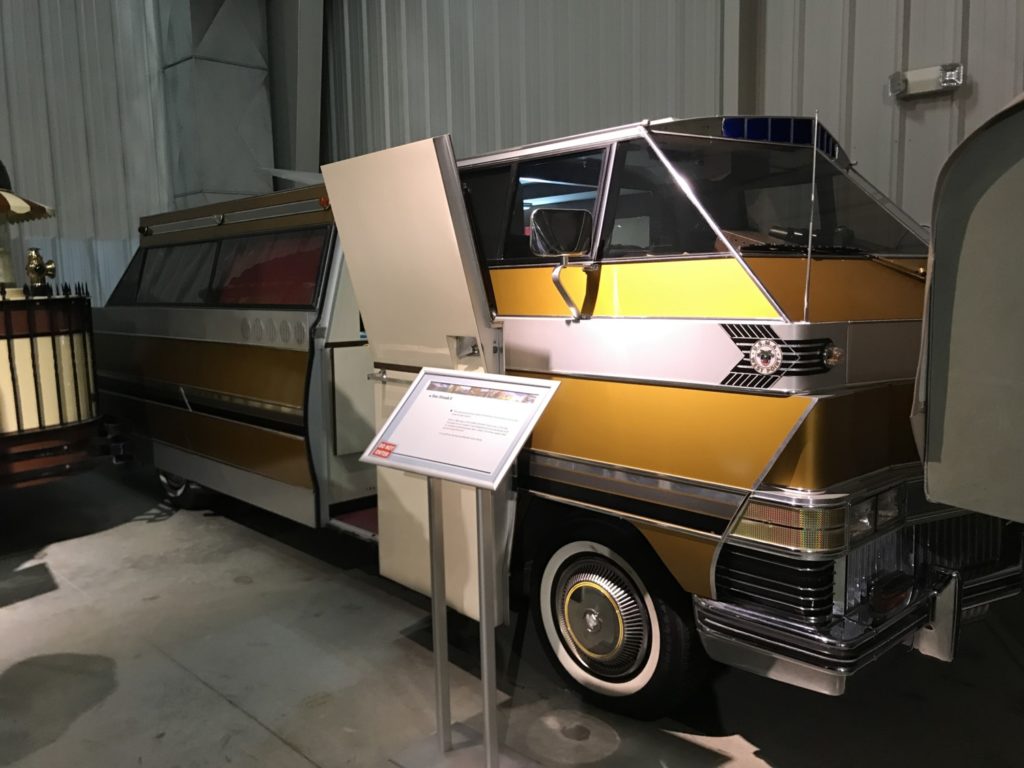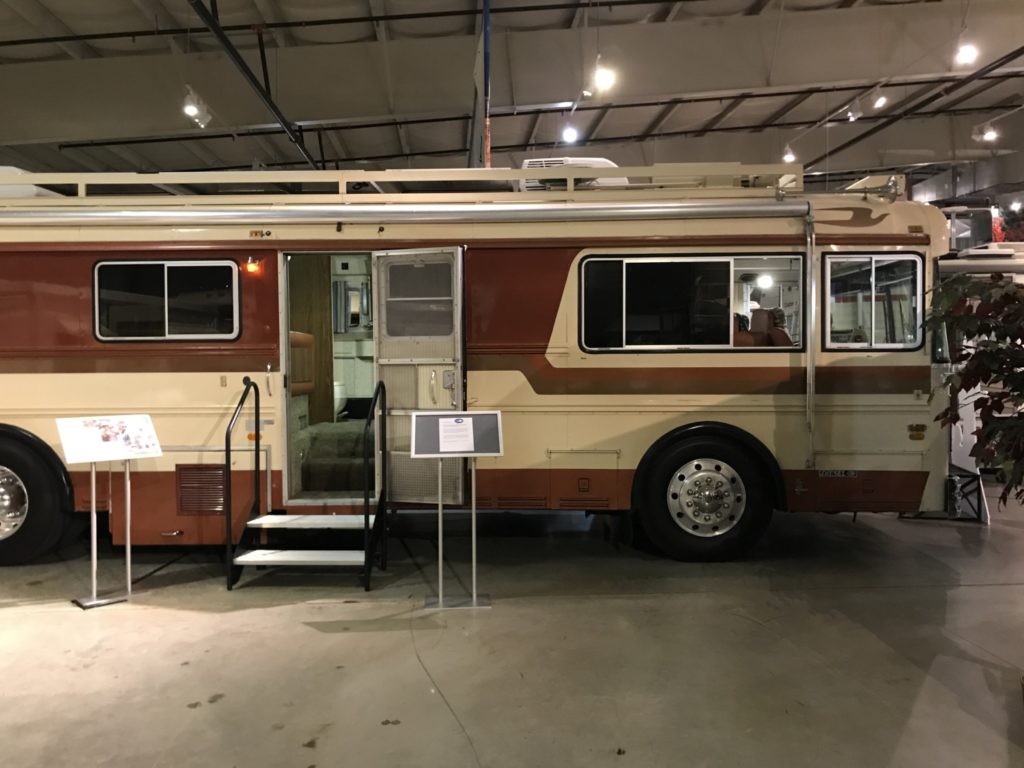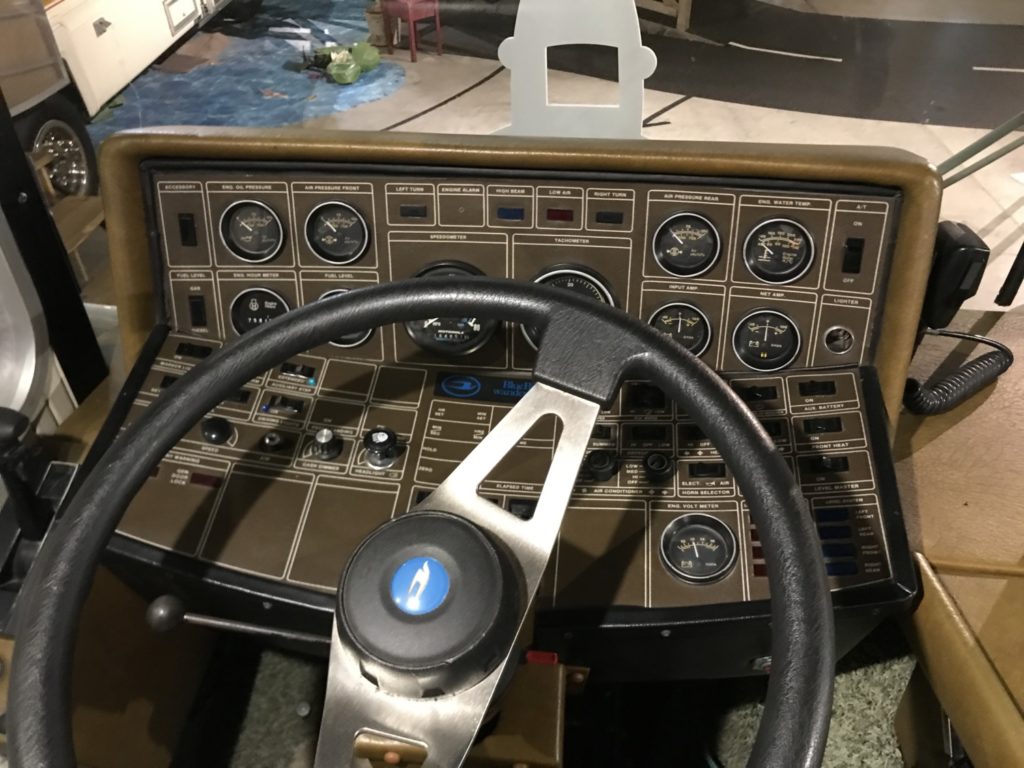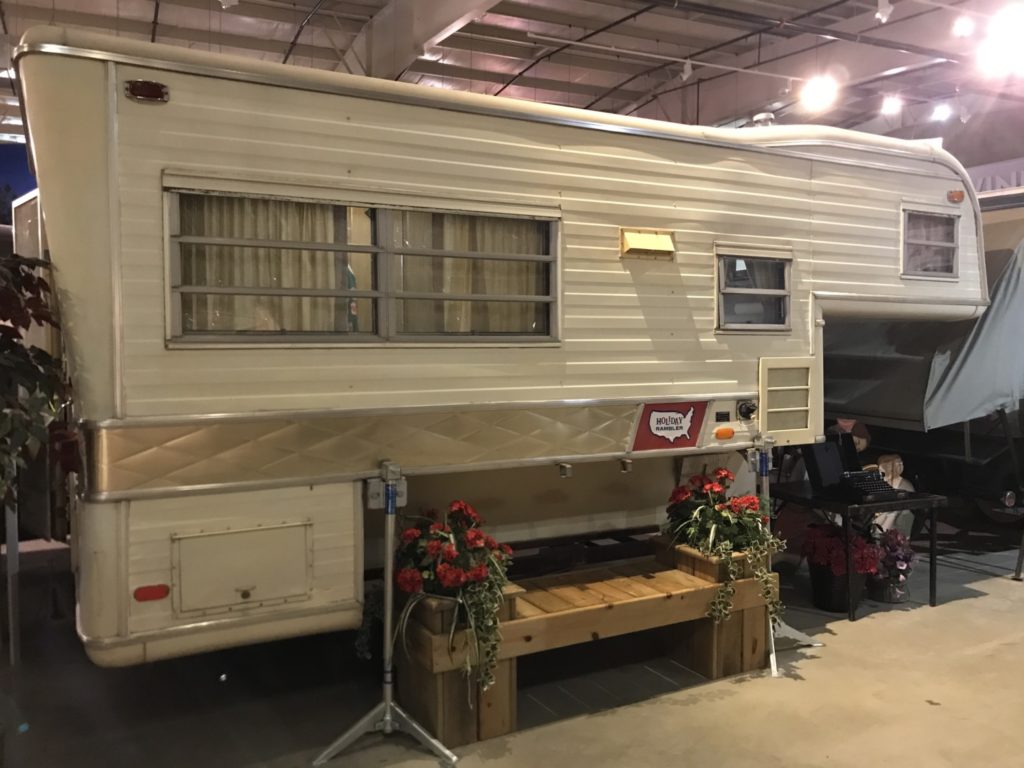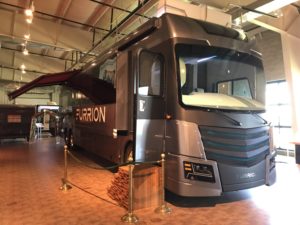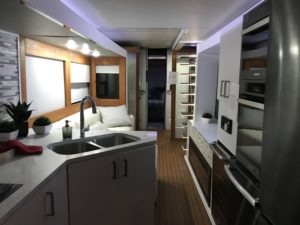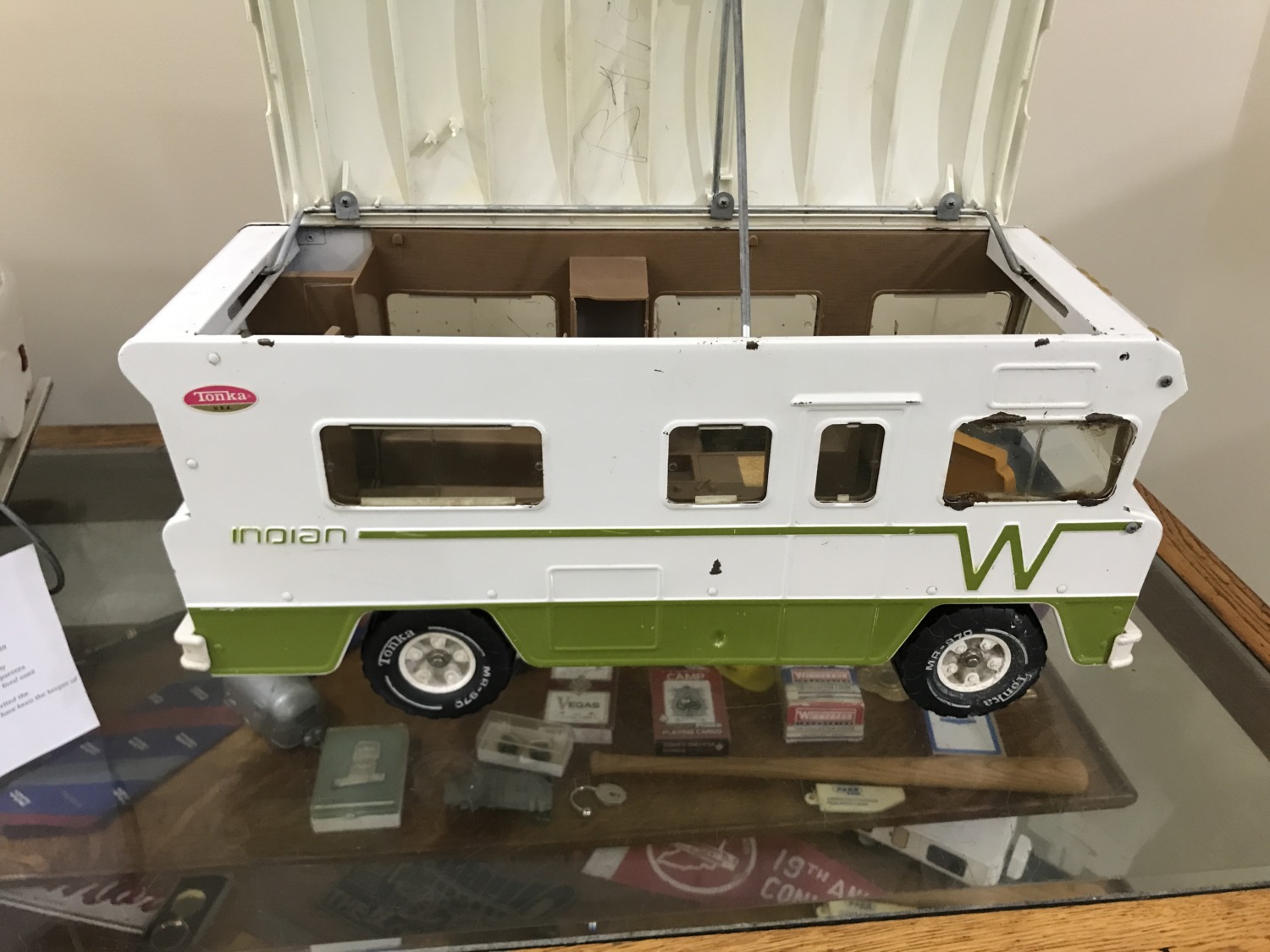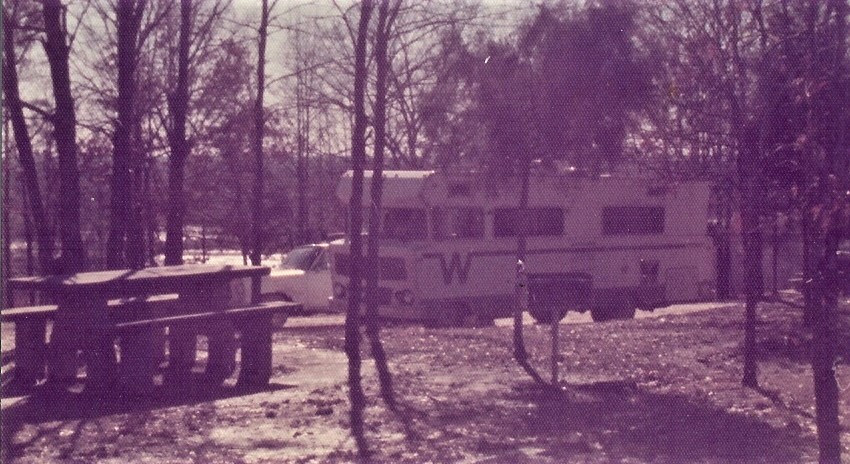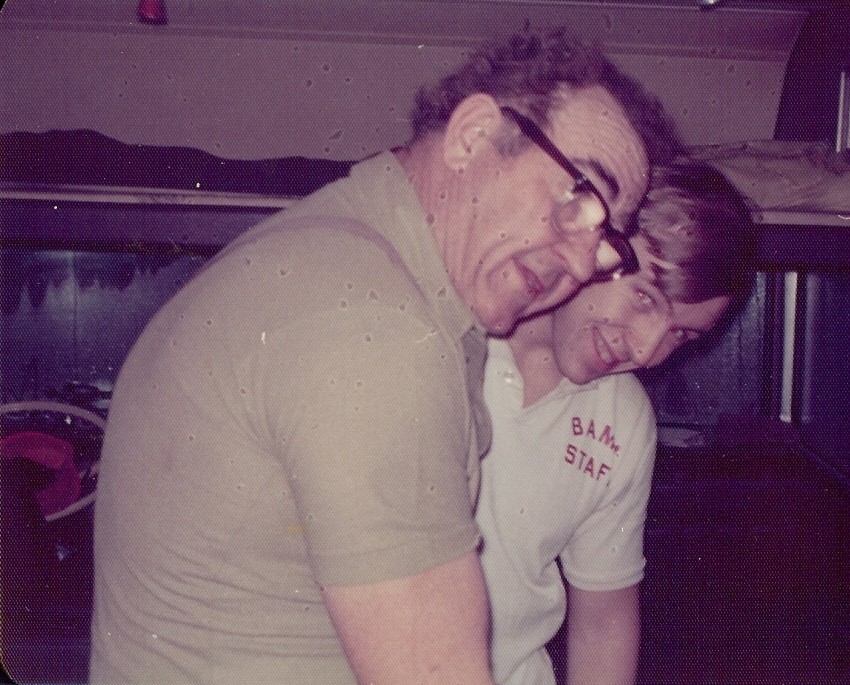Tom thinks the best thing about our quick trip to Indiana and Chicago was our stop at the RV Hall of Fame and Museum in Elkhart, Indiana. Elkhart, Indiana is known as the “RV Capital of the World.” Three RV manufacturers started their businesses in Elkhart in the 1930’s, and today there are more than 40 companies that manufacture 100 brands of RVs and their parts. Elkhart is an ideal location for manufacturing because of its skilled workforce and the ease of transporting RVs all over the US from Elkhart. When Tom and I were driving across northern Indiana, we saw hundreds of RVs being transported west.
The RV Hall of Fame and Museum celebrates this manufacturing heritage. You can see the RV Hall of Fame and Museum from I-80. Tom and I have wanted to stop there many times but were always in a hurry to get east or west. This trip we were determined to spend as much time as we wanted.
The RV Hall of Fame and Museum is in a beautiful, new building with plenty of space. In fact, they are still trying to figure out what to do with all their space. There is a nice theater, which presents a short video that oriented us to the museum. After that we headed to the Founders Hall to see the historic RVs.
We spent the vast majority of our time in the Founders Hall because the trailers were so interesting. They had examples of trailers from the time of the first cars. You could even say that people have been RVing since the first covered wagons. But RVs really date from the 1920’s. RVs were mostly trailers or add-ons to cars that were made by one person or a small shop. They didn’t start to be mass-produced until the 1930’s. These earliest trailers were often luxury vehicles because they were custom-made for rich people. It wasn’t until after World War II that manufacturers really started appealing to the growing middle class.
The trailers are presented in a roughly chronological order and they are packed into Founders Hall. We followed the road that started with a 1913 travel trailer pulled by a Model T. As we progressed, we found older trailers were sometimes mixed in with newer trailers. RVs started looking like what we recognize in the 1950’s. The ones on display varied from a tiny 12′ 1959 Serro Scotty Trailer that was supposed to sleep 4, to more luxurious motorhomes such as the futuristic 1937 Hunt Housecar. The Hunt Housecar was the first RV with a working shower inside.
We could walk inside many of the RVs and could peer inside many of the others. A yellow nylon rope barred the way for the RVs that we couldn’t enter. Even when we walked inside, we were careful about not touching anything. We wanted to continue to preserve the historic and interesting RVs in the museum.
The other areas of the RV Hall of Fame and Museum were interesting, but not as full. Upstairs memorialized all the inductees into the RV Hall of Fame. We didn’t recognize most of the names and didn’t spend a lot of time looking.
The Go RVing Hall contained a timeline of the Go RVing advertising campaign. You may have seen the ads on television, in magazines, or on Facebook. The Go RVing Coalition promotes these ads to show people the benefits of RVing. The Hall also includes one RV of the future. The model on display the day we were there was a Furrion Motorhome. The Furrion Elysium is a high-tech, state-of-the-art motorhome that is 45′ long. The driver’s seat looks more like the controls for a rocket than a car. Everything is digital from the steam shower to the hot tub and rooftop deck. Ads show it with a personal helicopter landing on the roof. Tom and I won’t be buying one any time soon – the starting price is 2.5 million dollars.
The Exhibitors Hall contains displays by different RV parts manufacturers. There are familiar names (to us) like Dometic (RV refrigerators), Thetford (toilet and black tank products), and Lippert (slideouts). There were also some unfamiliar companies. I was especially interested in a large display by the Manufactured Housing Industry. They had photos of people who lived in manufactured houses (what we used to call mobile homes) and saying what they liked about them. The #1 selling point seemed to be the affordability of manufactured housing.
The RV Hall of Fame and Museum also has a conference area that was closed the day we were there. There is a large, round lobby area that housed a display of RV models. One that was particularly interesting was a model of a 1975 Winnebago Indian Motorhome. Tom’s dad lived in one of these because he was a foreman on road construction crews and was always moving from place to another. Tom has lots of good memories of staying with his dad in the motorhome.
Tom thought the RV Hall of Fame and Museum was the best thing we saw on our quick trip across Indiana. I enjoyed it as well and am glad we finally stopped to see this very interesting place. The RV Hall of Fame and Museum is open daily during the summer and closed in the winter. There is an admission charge.

